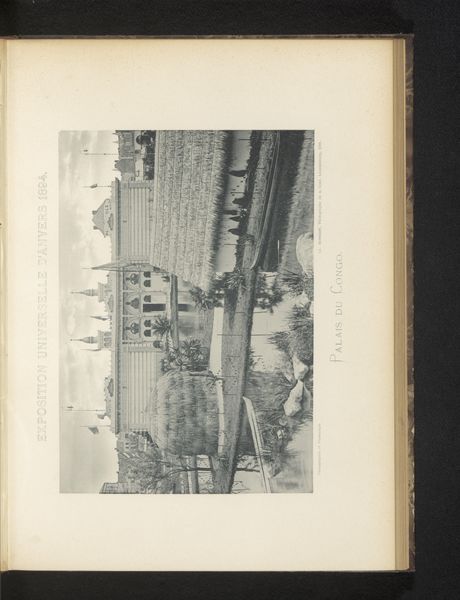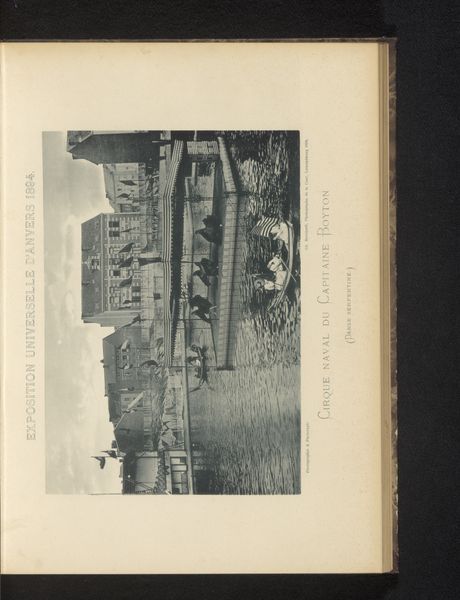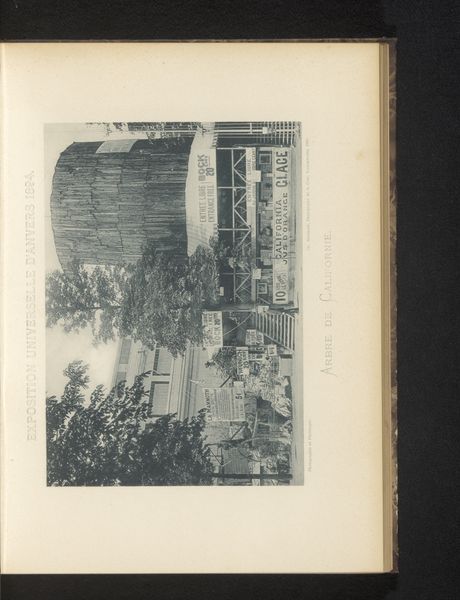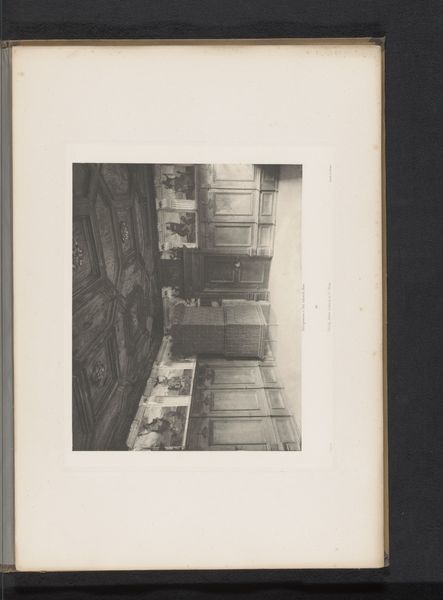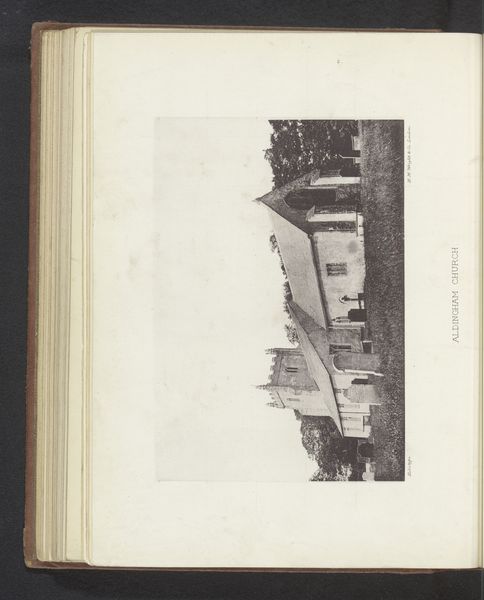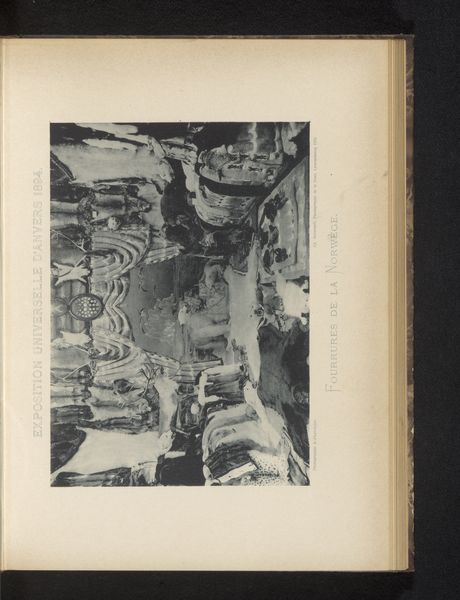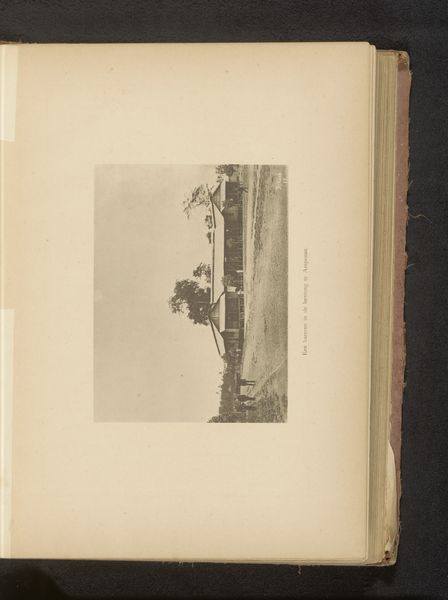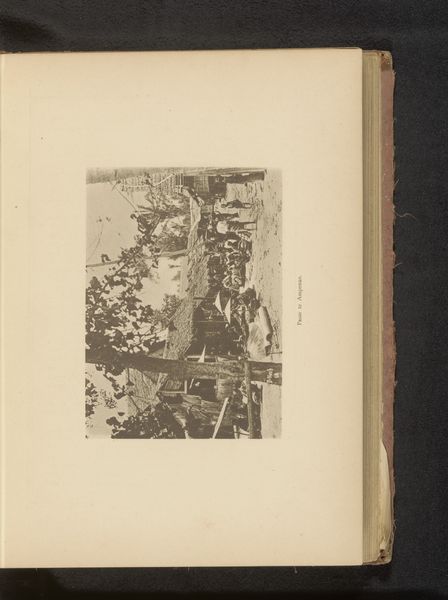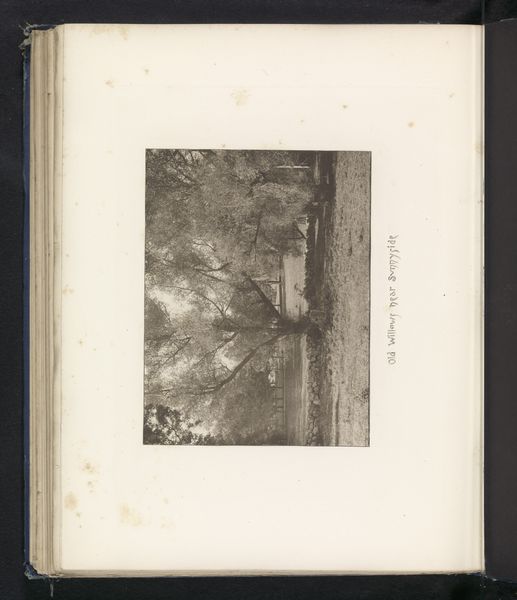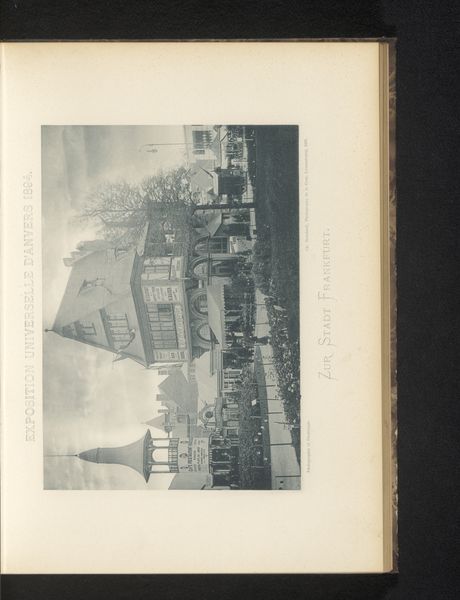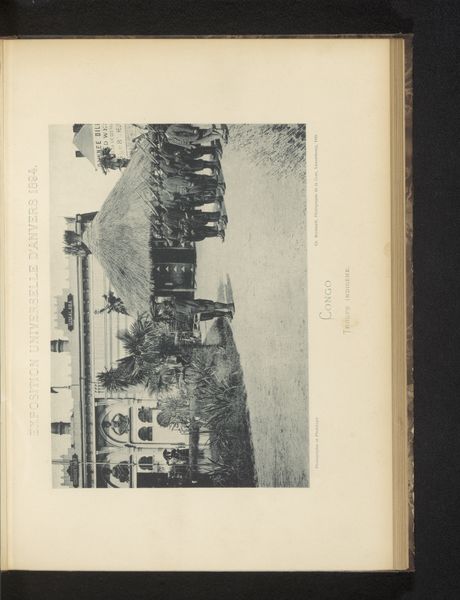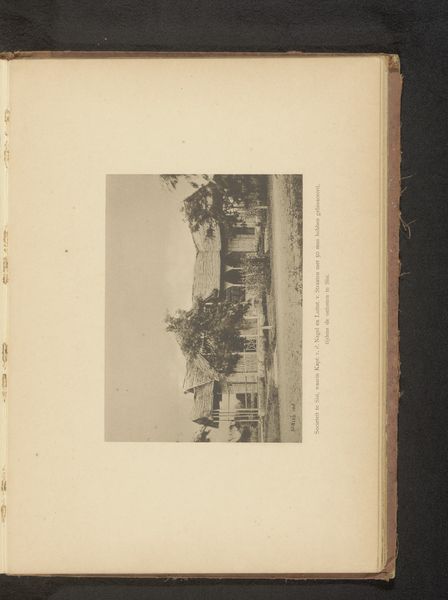
Mannen in een roeiboot in een nagebouwd Congolees dorp op de Wereldtentoonstelling van Antwerpen in 1894 1894
0:00
0:00
print, photography, albumen-print
# print
#
photography
#
orientalism
#
history-painting
#
albumen-print
Dimensions: height 154 mm, width 216 mm
Copyright: Rijks Museum: Open Domain
Curator: This image presents "Mannen in een roeiboot in een nagebouwd Congolees dorp op de Wereldtentoonstelling van Antwerpen in 1894," or "Men in a rowboat in a rebuilt Congolese village at the Antwerp World Fair in 1894," captured by Charles Bernhoeft. The albumen print reveals a scene of constructed otherness for public consumption. Editor: The initial impression is undeniably eerie. The stark contrast in black and white enhances the sense of a staged performance. It is interesting the artist chose albumen print technique, given the context. Curator: Indeed, the albumen process itself, using egg whites to bind the image to the paper, speaks volumes about the value placed on preserving and presenting these colonial spectacles. One can imagine the layers of labor involved—both in the creation of the "village" itself and in the meticulous photographic process. The constructed village, presumably fashioned from materials sourced, or perhaps mimicking resources taken, from the Congo, creates a disquieting spectacle. Editor: Precisely, this image offers a window into the performance of power, doesn’t it? The presence of Congolese men rowing a boat for the enjoyment and edification of the European audience reveals the blatant objectification and exploitation inherent in colonial exhibitions. The camera becomes complicit in creating and perpetuating harmful stereotypes. I'd like to consider it as it connects to exhibition culture broadly at the time. Curator: The setting, a World's Fair, was essentially a marketplace of manufactured desire, driven by industrialized production and global trade. This photography and its material reality speaks volumes to that truth. The act of meticulously arranging this image suggests that the reproduction and circulation of such imagery contributed directly to legitimizing colonial control. Editor: Absolutely. We must remember that photography was instrumental in shaping public opinion and justifying imperial ambitions, making this particular example far from innocent or neutral. I’m wondering what this moment, so callously manufactured, meant for the people whose identities were actively being taken and reshaped. It seems essential to unpack all the ways in which their humanity was disregarded here. Curator: It is the stark reminder of the power dynamics inherent in the colonial project, visualized through the specific, deliberate construction of a single photograph. Editor: A disturbing scene that serves as an important moment for recognizing these performances of power and acknowledging the profound violence such images represent.
Comments
No comments
Be the first to comment and join the conversation on the ultimate creative platform.
